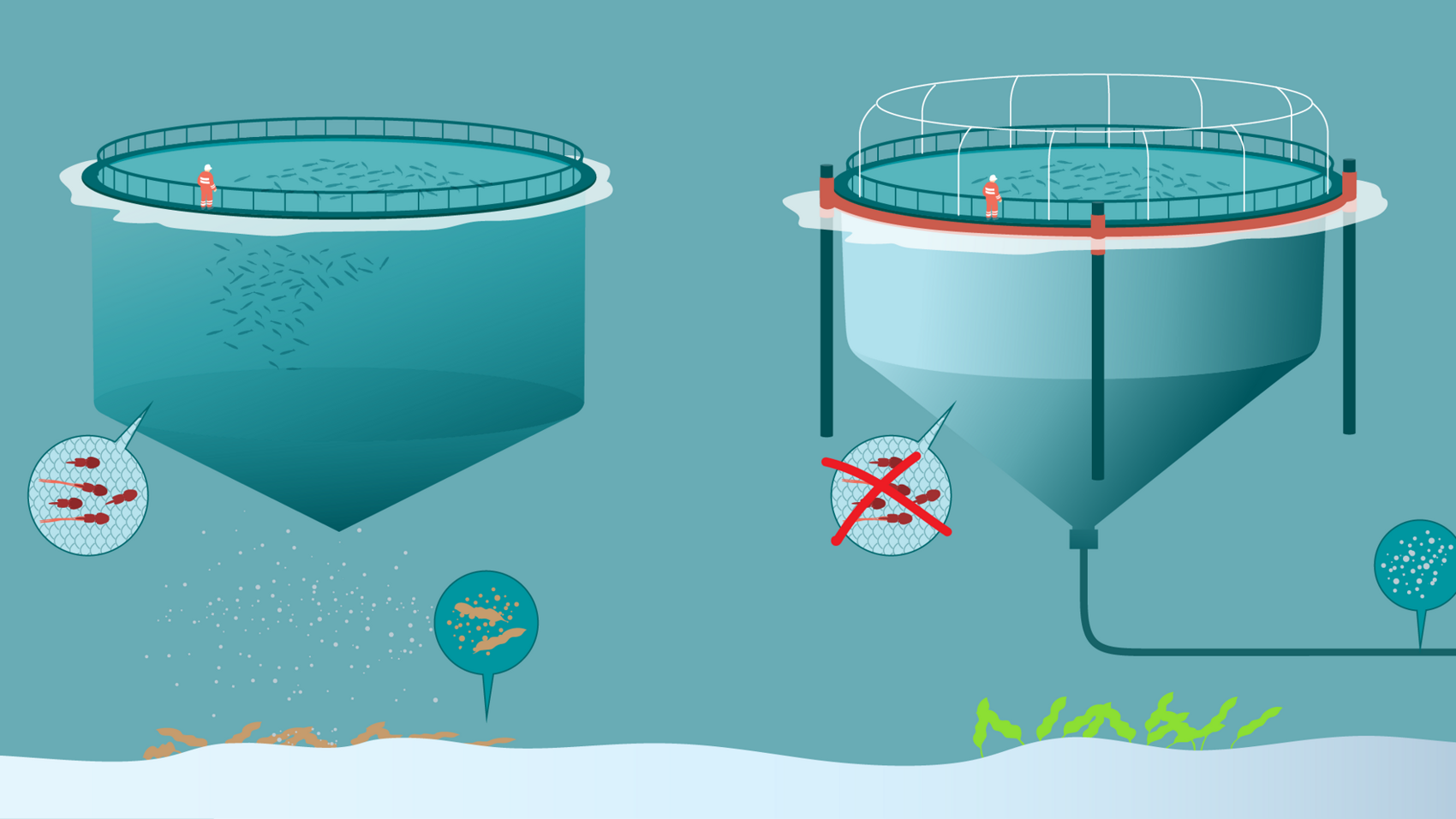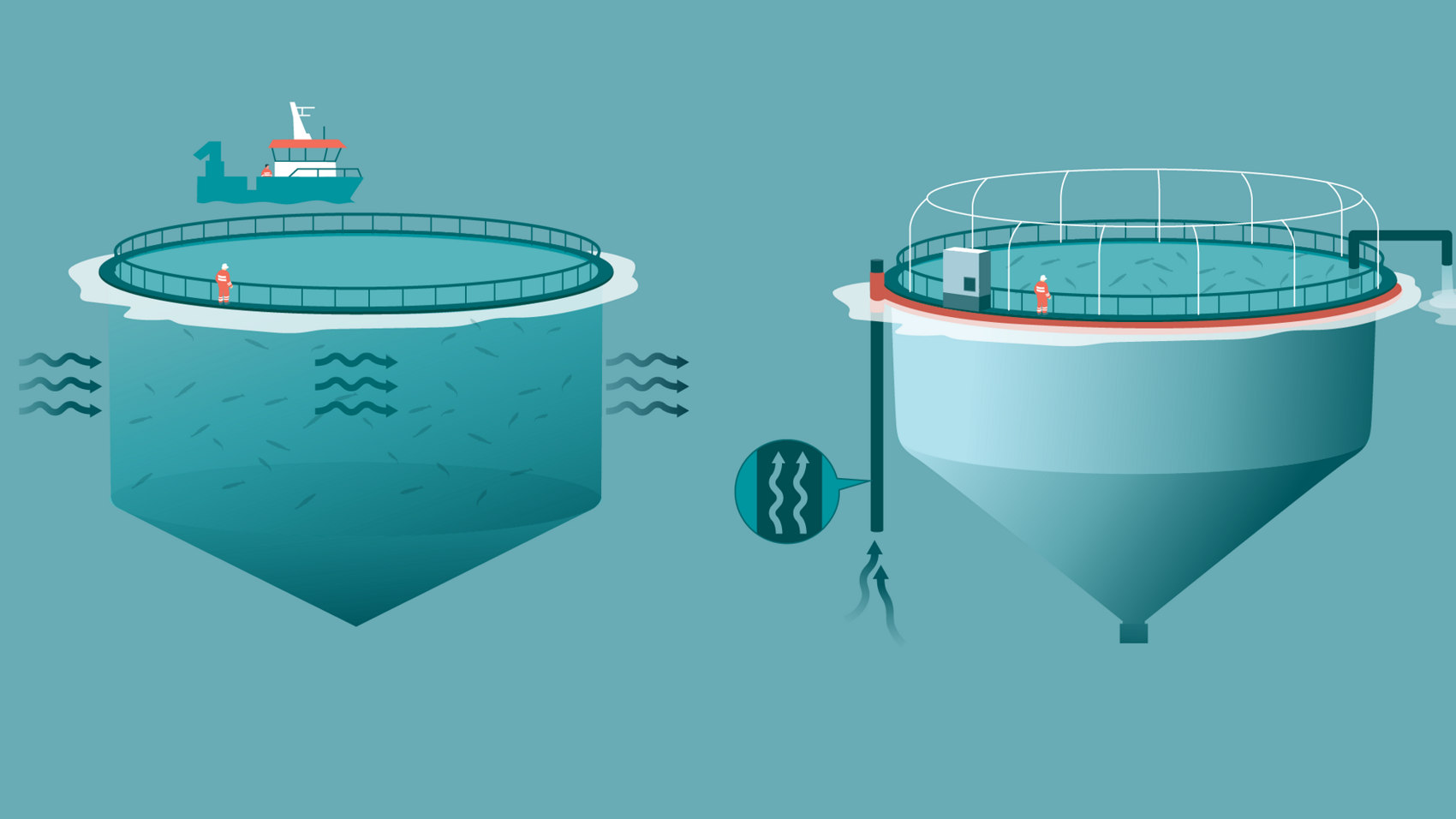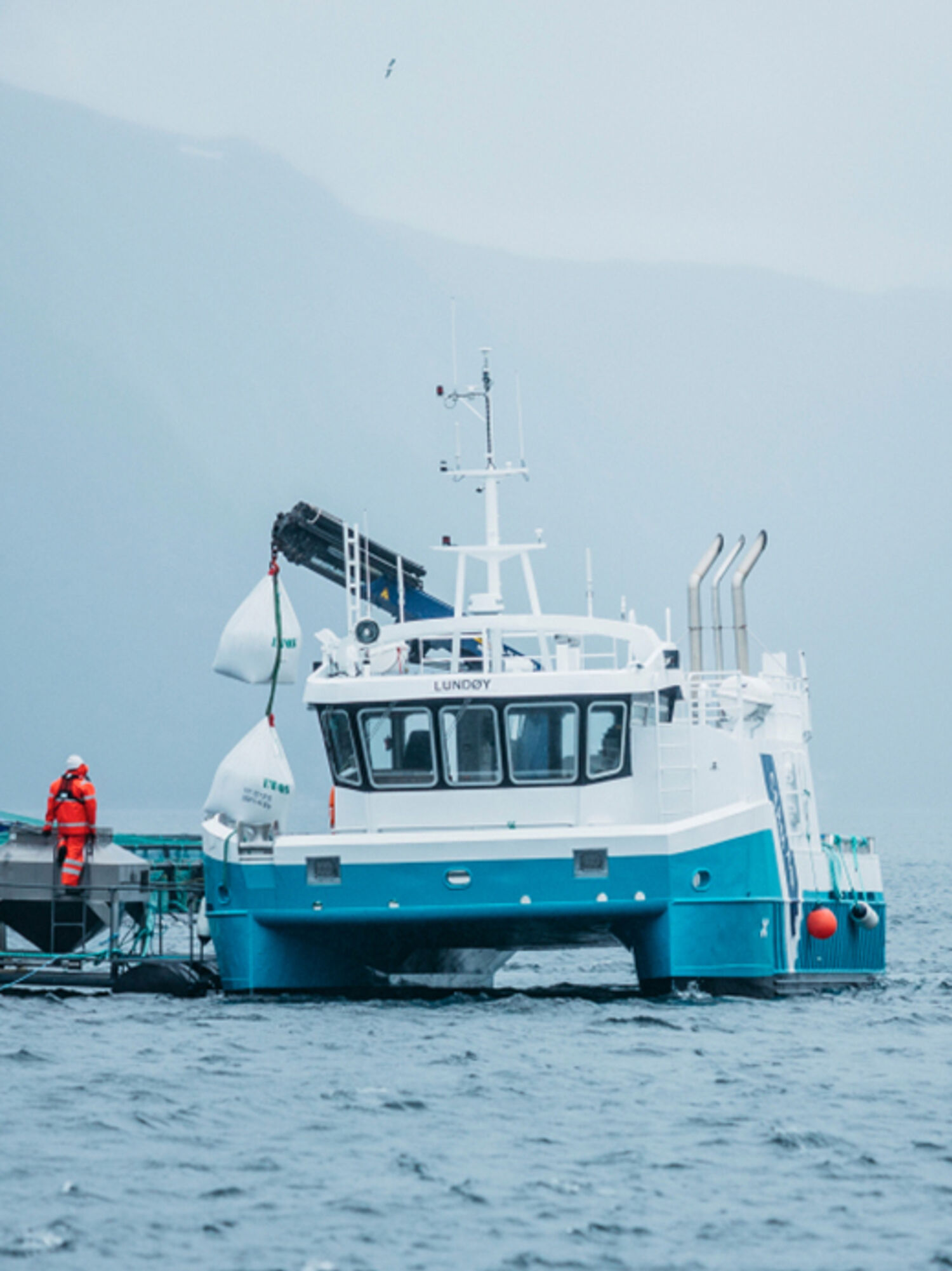Sea the solution / The Environmental Challenge
Cermaq’s closed-cage system protects both farmed and wild ecosystems.
Coastal indigenous and non-indigenous communities have strong connections to the ocean environment and the species that live in these unique ecosystems. When ocean farming takes place in these regions, it is natural to want to understand any potential impacts resulting from these farms.
One particular area of long-term study is the associations between sea lice, their impact on farmed salmon, and the infection by this parasite of wild fish. Cermaq recognizes this area of concern and has worked over the years to coordinate its operations with local migratory patterns to protect wild fish on their journey to and from spawning grounds.
But in recent years, Cermaq has been making other advances that will improve the health of both farmed fish and those in the surrounding environment.
“Closed-cage farming enables tighter control of many factors such as water oxygenation level, temperature and hydrodynamic flow. It also allows for closer monitoring of fish health through the use of sensor technology and, with that, improvements to animal welfare,” says Harald Takle, Cermaq´s head of strategy and seawater innovation.
Cracking the closed-cage code
Closed cages are not a new idea. Various experiments have been made with them since the 1980s, but problems such as poor durability of materials or insufficient water flow got in the way of commercial use in the early days.
“It is only since 2017, when Cermaq entered into a partnership with Fiizk, a Norwegian company dedicated to aquaculture technology, that the closed-cage concept has been able to reach its true potential,” Takle says.
Now in its fourth incarnation, Cermaq’s closed cage nurtures fish in their growth from around 80 to 1,000g.

“Fish farmed in this system show no sea lice and equally good rates of development when compared to those farmed using open-net techniques, which are standard in the sector,” says Vicki Savoie, Cermaq Canada´s director of sustainable development, East Coast. The secret of success is sufficient water-exchange rate and oxygen systems that support the fish.
“Fish farmed in this system show no sea lice and equally good rates of development when compared to those farmed using open-net techniques, which are standard in the sector.”
–Vicki Savoie, Cermaq Canada´s director of sustainable development, East Coast.
The aim now is to improve fish health and growth by building in better solutions for maintaining water quality and cleaning of cages. This will allow Cermaq to customise rearing conditions, minimise lice infection, and improve waste-sludge collection. This sludge, which includes particles such as faeces and uneaten food, could be used elsewhere for fertiliser or the production of biogas.
New farming opportunities
Cermaq farms much of its salmon in northern Norway, where conditions are some of the best in the world. But as demand for farmed fish increases, other regions must be considered. Algae, jellyfish, low oxygen and predators can all pose a problem in some locations, but the closed-cage approach makes it possible to overcome all of these hurdles.
Even in places where fish farming is long established, closed cages open up the possibility to farm more efficiently.
“In Canada, there are sites where closed cages could be situated and, following this, existing open-cage sites could even be retired,” Savoie says.
“In Canada, there are sites where closed cages could be situated and, following this, existing open-cage sites could even be retired”.”
–Vicki Savoie, Cermaq Canada´s director of sustainable development, East Coast.

If there is a disadvantage to the closed-cage system, it is energy use. Much of this power comes from diesel-driven generators. But Cermaq is working with BC Hydro, a utilities company operating on Vancouver Island, to explore ways to expand the power grid. This would be beneficial both to Cermaq and remote communities, where existing power infrastructure is often lacking.
Fish farming is a huge responsibility, and it is out of concern for the welfare of the animals under its care and ocean ecosystems that Cermaq has invested so much in developing the closed-cage approach to fish farming. With the right regulatory and infrastructure support, closed-cage farming can improve the health of both farmed and wild fish populations while contributing to the sustainable development of coastal communities.
What to read next

Producing more climate-friendly protein
With the goal of cutting 35% of greenhouse gas emissions (GHGs) by 2030, Cermaq is concentrating on reducing use of fossil fuels.